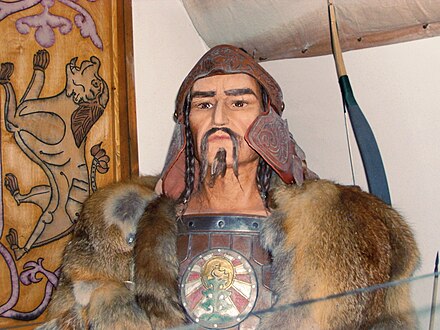"Massakern i romarrikets skugga" is a relatively interesting Swedish documentary about a sensational archeological site at the island of Öland in the Baltic Sea. While the site has apparently become world famous, the documentary is probably only available in Swedish. The place in question is Sandby borg at southern Öland. Around AD 500, this ringfort or small walled town was attacked by peoples unknown, and the entire population massacred. The remains of the dead and their belongings are very well preserved.
Öland and the other petty "kingdoms" (really chiefdoms) in southern Scandinavia were influenced by the Roman Empire. In Blekinge, archeologists have found a gold coin with a "Roman" portrait of a local "king", the Roman letters on the coin being crudely faked by somebody who probably couldn´t read them! The ringforts, including Sandby borg, are built on Roman models. Excavated Roman coins makes it possible to follow the movements of Scandinavian merceneries through the territory of the Western Roman Empire (which included Ravenna, but when the narrator mentions the Western Empire, the famous portrait of Justinian is shown - who was of course a later Eastern Roman emperor!). Scandinavians might also have fought for the Huns. While no Hunnish artifacts have ever been found in Scandinavia, jewels from the area today called the Baltic republics have - and the Huns are believed to have reached the eastern and southern shores of the Baltic Sea (at least according to the archeologists interviewed in this production). The Huns (called Huna) are also mentioned in later Scandinavian sagas.
The most fascinating speculation in the documentary is that the notorious Norse god Odin is a composite character, perhaps a Germanic deity fused with shamanistic elements from North Asiatic cultures - and the Huns were North Asiatic. Maybe Odin was even inspired by the Hunnish leader Attila himself? Snorri Sturluson (13th century) claimed in his "Prose Edda" that Odin was a real king from the Black Sea region, which was indeed under Hunnish control during the Migrations. The idea that Odin is a Germanic-Eurasiatic mix is probably impossible to conclusively prove, but it makes much more sense than other theories I´ve heard. "Odin was Mercury" or "Odin was Varuna" or "Odin´s shamanistic elements came from the Sami (the Laps)". It sure is an intriguing idea that the Scourge of God inspired an actual god! (As a side point, let me note how *utterly absurd* it is for naïve American Neo-Pagans to invoke Odin.)
But what happened at Sandby borg? When the Western Roman Empire collapsed, no new gold reached Öland. Perhaps the local chiefs started quarreling and before long, fighting? The fateful day of the massacre, a number of very prominent people seem to have gathered at the ringfort, perhaps half of the local island elite. In the middle of the night, another faction attacked the fort. There is no indication that the ringfort was ever stormed - a traitor may have opened the gates from the inside. Many people killed were civilians, who were essentially executed. The "king" was slained before his high seat, his body deliberately mistreated even after death. For instance, teeth from a sheep or goat have been inserted into his mouth! The dead weren´t buried, nor were their valuables plundered. The attack seems to have been symbolically carried out in a way that would make the place taboo forever. One archeologists interviewed claims that the locals knew that something terrible had happened at the place still 1,400 years later, fear of going to the place being seared into folklore (I find this hard to believe - I doubt oral tradition is *that* resilient).
Still, an intriguing look into a time when Scandinavia was a Roman, or perhaps Romano-Hunnish, periphery...

The thing about certain religious figures being composite characters sure is an intresting theory that might be true in many cases.
ReplyDeleteI read in "Why im not a muslim" by Ibn Warraq that the mainline theory in The Soviet unioun among historians was that Mohammed was a composite character of various successfull arabic warlords.
I Wonder what would happen to a mainstream swedish researcher today if he would publish anything like that.
There would be "mysterious explosions" around his car?
ReplyDelete